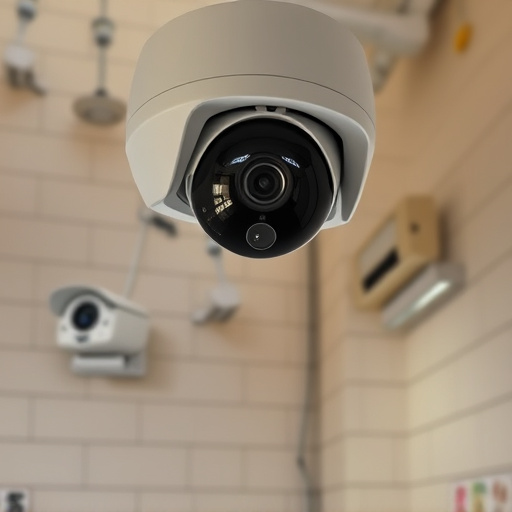In the digital age, high-fidelity dummy camera replicas balance security and aesthetics. These advanced shells mimic real cameras, offer improved durability, and act realistically to deter crime without active surveillance costs. Crafted with precise materials, painting, and testing, these "Most Convincing Dummy Camera Type" solutions provide both visual appeal and robust security for outdoor spaces.
In today’s digital age, security cameras are ubiquitous, yet their physical presence can be a deterrent or an encouragement for crime. This article delves into the art of realistic security camera shell design, focusing on creating most convincing dummy cameras. We explore the growing need for deceptive security measures, key design considerations, popular materials, and rigorous testing to ensure both effectiveness and durability. By understanding these aspects, designers can craft superior dummy cameras that deter potential perpetrators.
- Understanding the Need for Realistic Security Camera Shells
- Key Considerations in Designing Convincing Dummy Cameras
- Popular Materials and Manufacturing Techniques
- Testing and Refinement for Optimal Deception and Durability
Understanding the Need for Realistic Security Camera Shells
In today’s digital age, security cameras are an integral part of many public and private spaces, acting as a crucial deterrent for potential criminals. However, a common challenge faced by security managers is the need to maintain a convincing presence while also ensuring the aesthetic harmony of their surroundings. This is where realistic security camera shells come into play. The market offers various dummy camera types, but understanding which one aligns best with your specific needs is essential. Among these, high-fidelity replicas designed to mimic real cameras are proving to be the most convincing option for enhancing security without compromising the visual appeal of a location.
These advanced shells not only look and feel like genuine cameras but also offer additional benefits such as improved durability and weather resistance, making them ideal for outdoor installations. By opting for these realistic designs, businesses can avoid the costs and complexities associated with maintaining active surveillance equipment while still reaping the security benefits of visible camera presence. This strategy is particularly effective in deterring criminal activity and fostering a sense of safety among patrons or residents.
Key Considerations in Designing Convincing Dummy Cameras
When designing the most convincing dummy cameras, several key considerations come into play. Firstly, the visual appearance is paramount; the shell must accurately mimic a real security camera, down to the smallest details like lens shape, casing texture, and branding logos. The goal is to create an exact replica that cannot be easily distinguished from genuine equipment.
Secondly, functionality is essential. While these dummy cameras are not intended for actual surveillance, they should operate smoothly and respond realistically to movement or sound triggers. This involves integrating sensitive motion sensors and possibly audio components to replicate the behavior of real cameras, making them a more effective deterrent. The right combination of these factors will ensure that the dummy camera design is both authentic-looking and convincingly functional.
Popular Materials and Manufacturing Techniques
In the realm of security camera shells, the choice of materials and manufacturing techniques plays a pivotal role in achieving an authentic and convincing design. One of the most popular options for creating realistic dummy cameras is using high-quality plastics and resins. These materials offer excellent durability and can be molded to replicate various real-camera textures and shapes with intricate details. Advanced manufacturing processes, such as injection molding, enable precise duplication of camera models, ensuring an almost indistinguishable look from genuine equipment.
Additionally, the use of paint and finishes further enhances the realism. Expert technicians employ techniques like screen printing and pad printing to apply brand logos, model numbers, and other markings, adding a layer of authenticity. The finishing touches, including adding weatherproofing and incorporating subtle flaws or imperfections, contribute to making these dummy cameras the most convincing type available in the market, offering both aesthetic appeal and practical security solutions.
Testing and Refinement for Optimal Deception and Durability
Testing and Refinement are key stages in developing a security camera shell that combines both deception and durability for optimal effectiveness. To determine the most convincing dummy camera type, designers conduct rigorous simulations to assess how well the shell mimics an active camera, fooling potential intruders. This involves careful observation of material choices, shape, and surface treatments that accurately replicate the look and feel of a genuine security device.
Multiple prototypes are crafted, each refined based on feedback from tests, ensuring the final design is not only visually deceptive but also built to withstand harsh weather conditions and tampering attempts. The goal is to create a dummy camera shell that blends seamlessly into its environment, providing false sense of security for would-be thieves while safeguarding the actual surveillance equipment hidden beneath.
Realistic security camera shells are not just an aesthetic enhancement; they serve as a powerful deterrent against theft and vandalism. By understanding the need for such designs, considering key factors like material choice and testing rigor, we can create truly convincing dummy cameras that combine deception and durability. This ensures that properties remain protected while maintaining an aesthetically pleasing environment. Among various types, high-quality 3D printed dummy cameras have emerged as one of the most convincing options, offering both realism and longevity.
